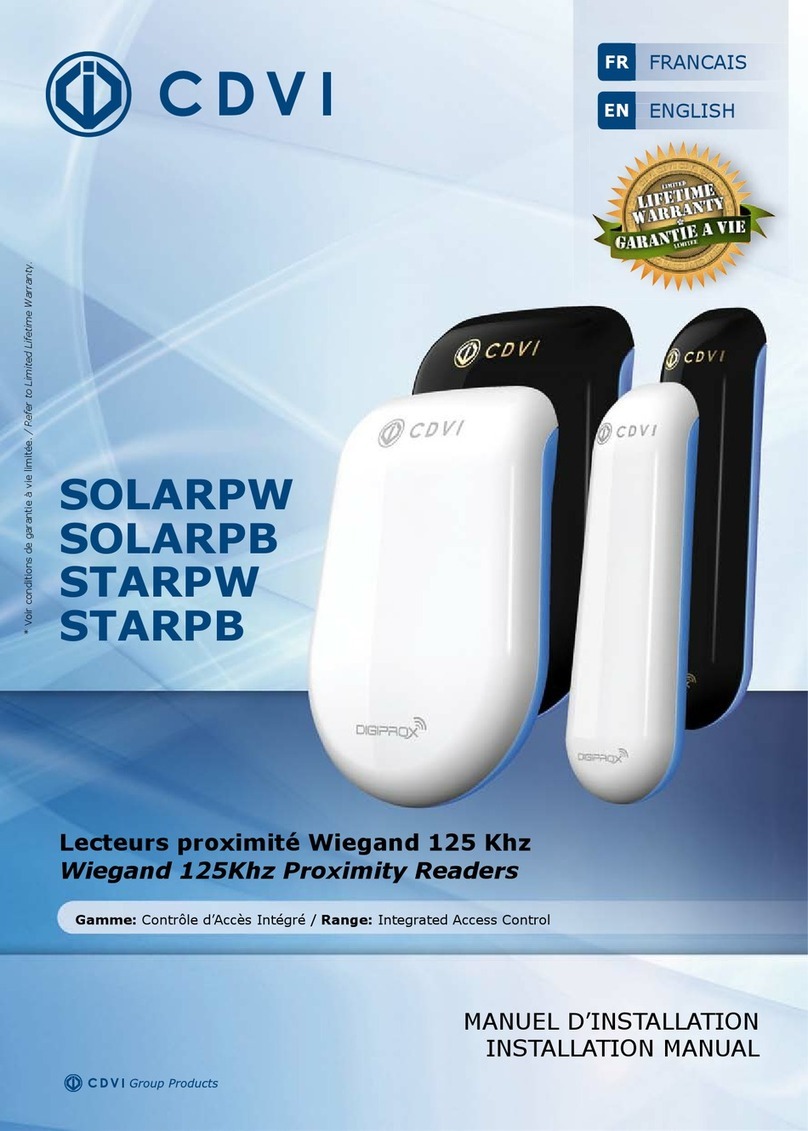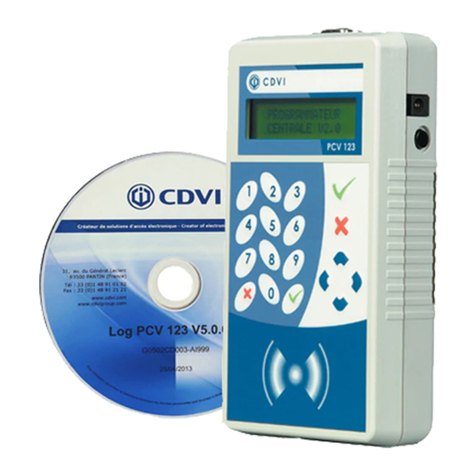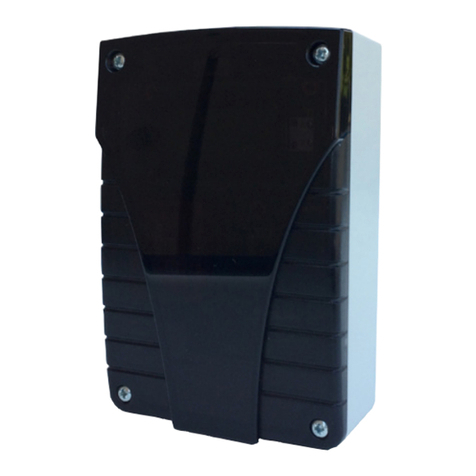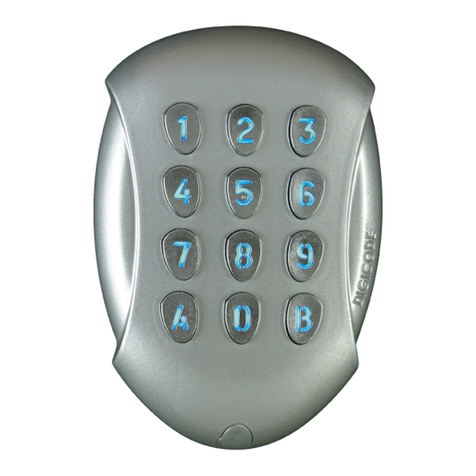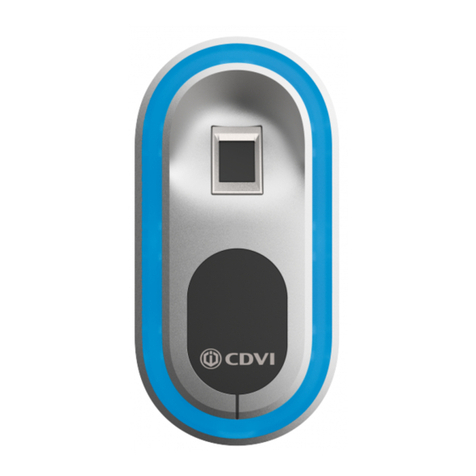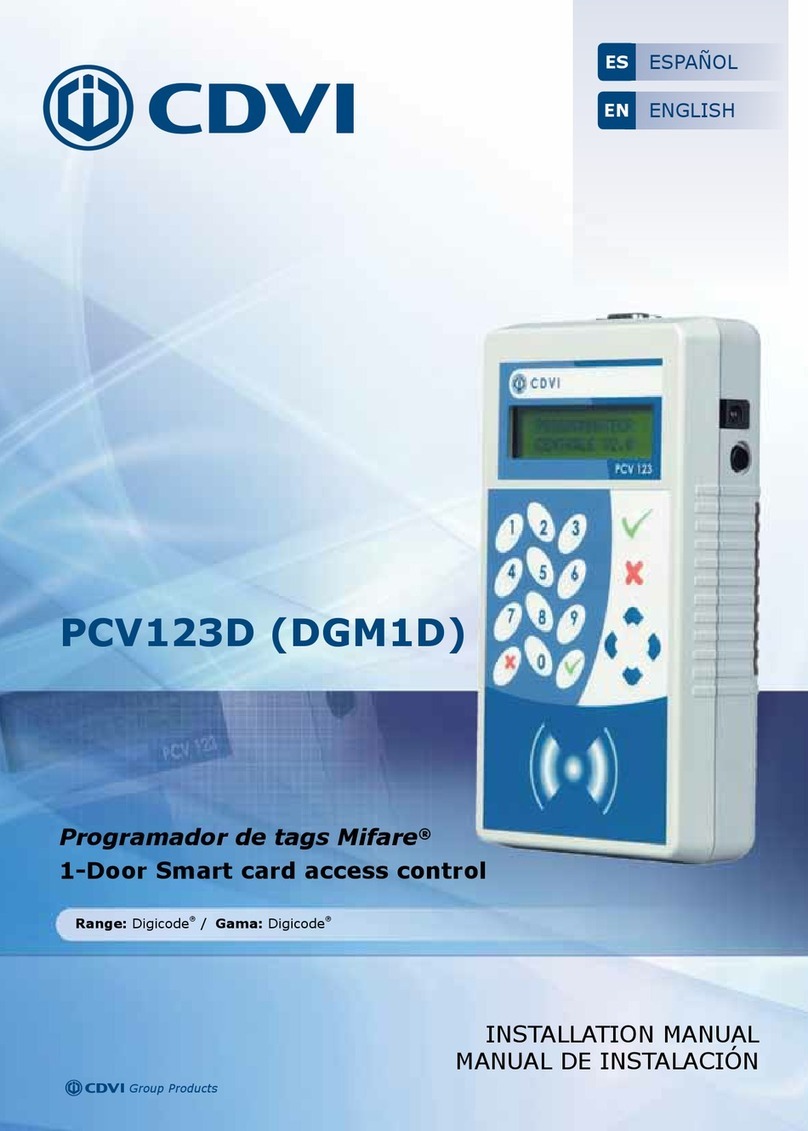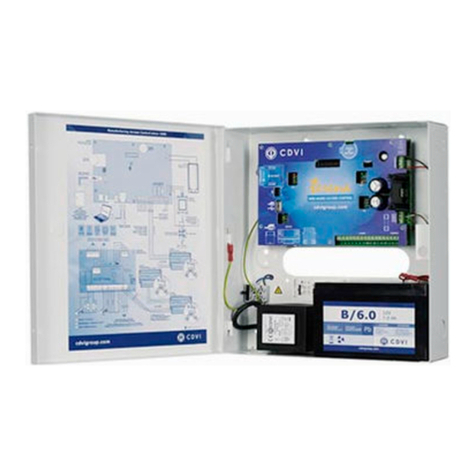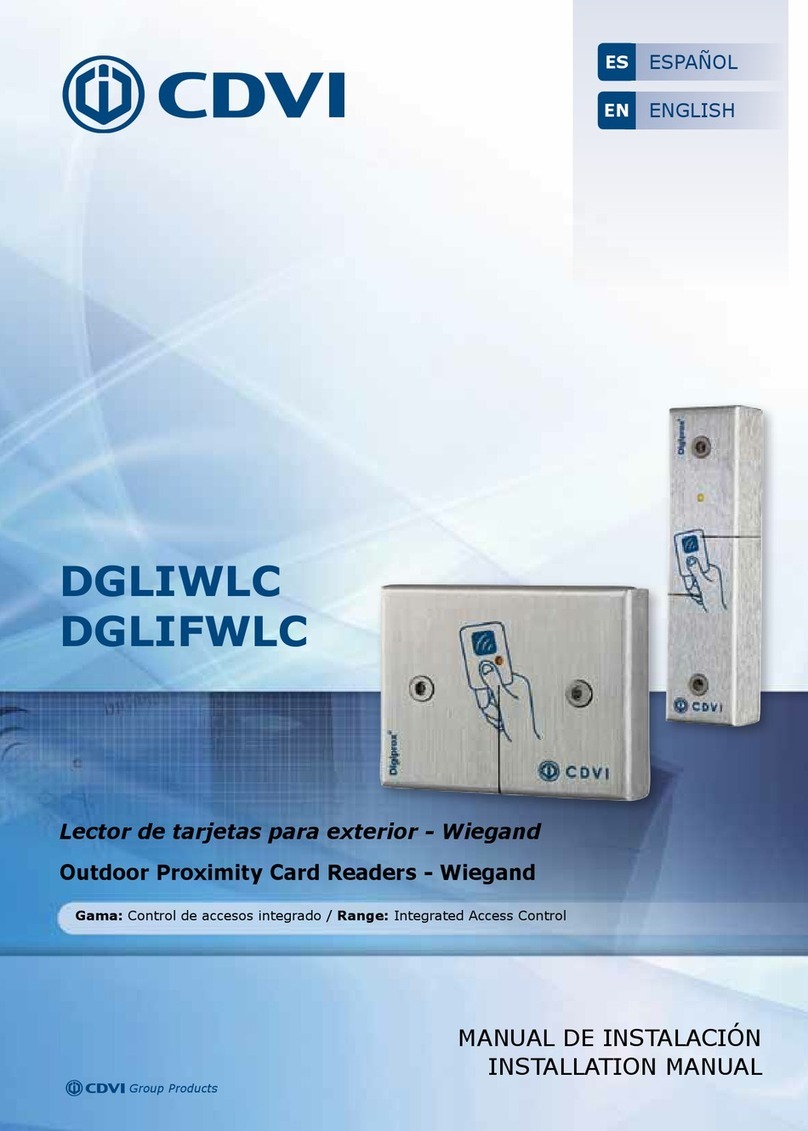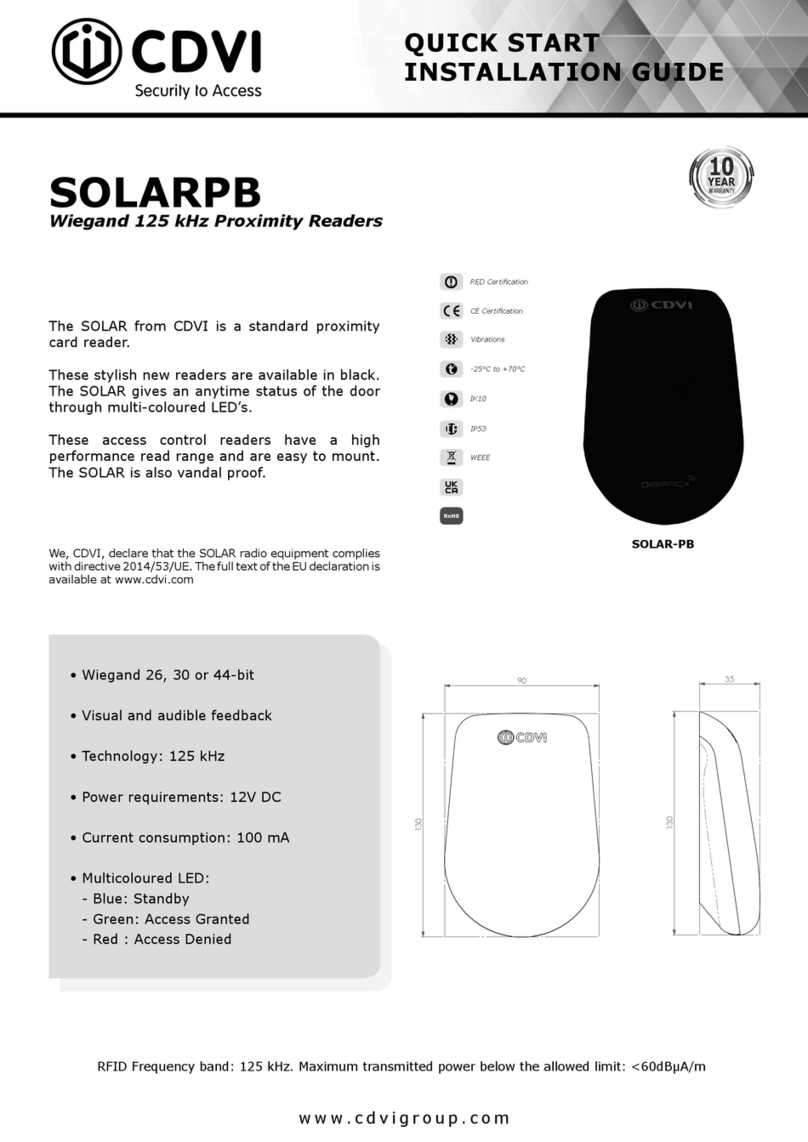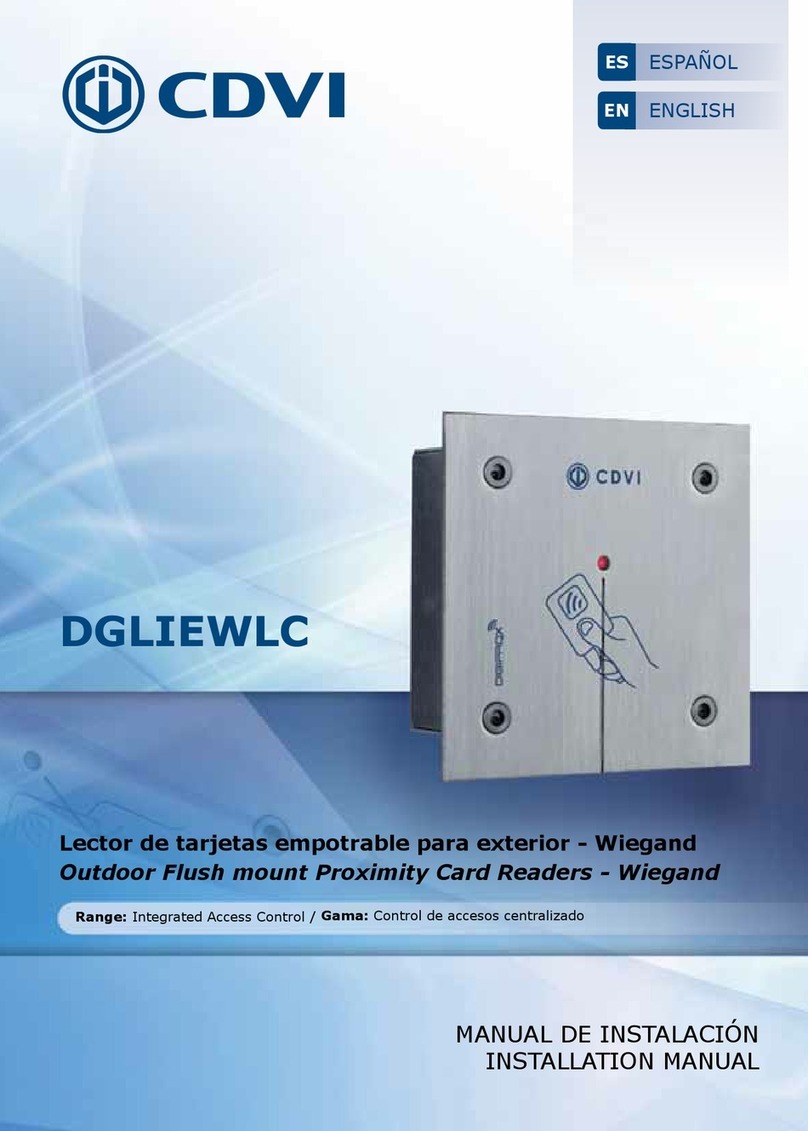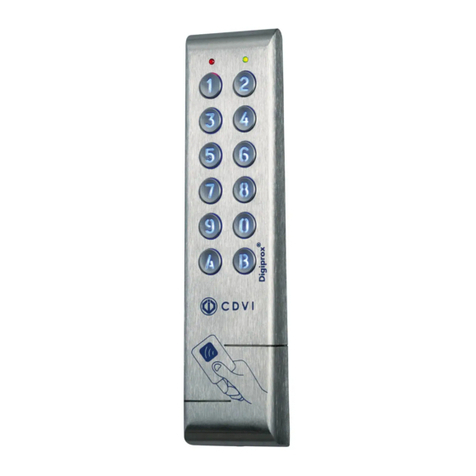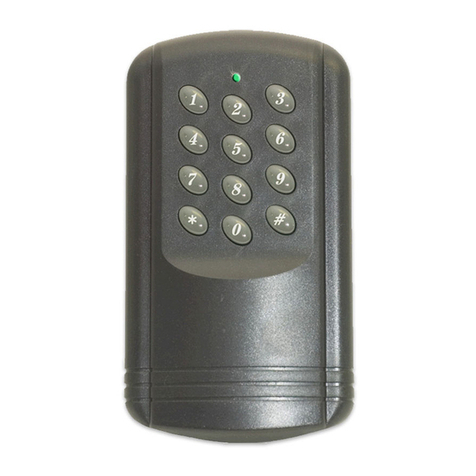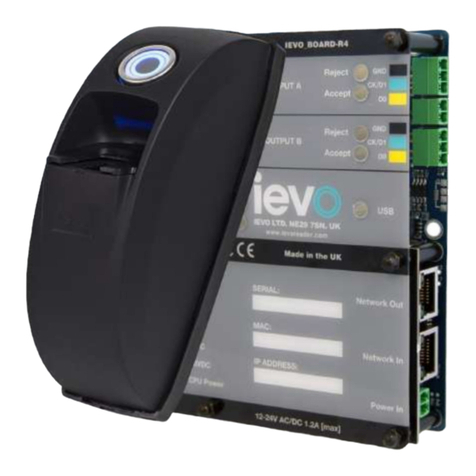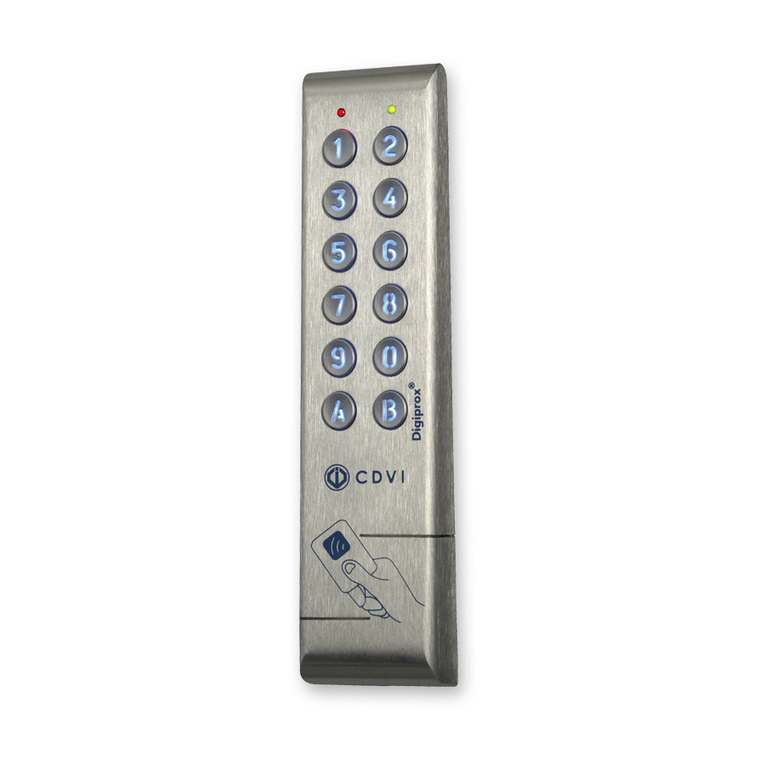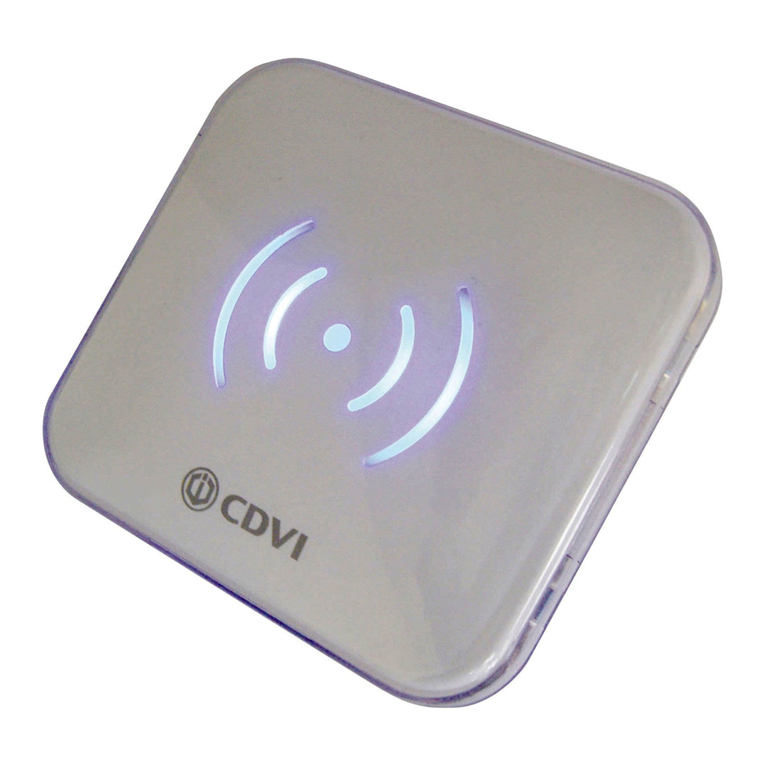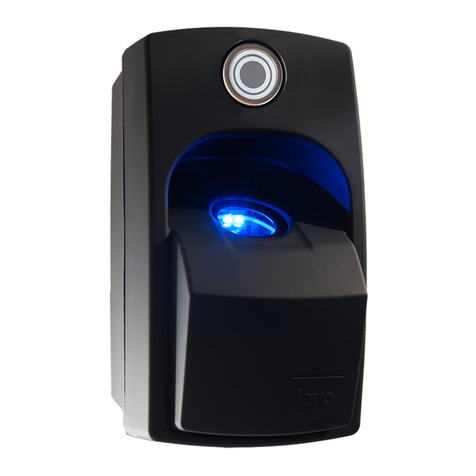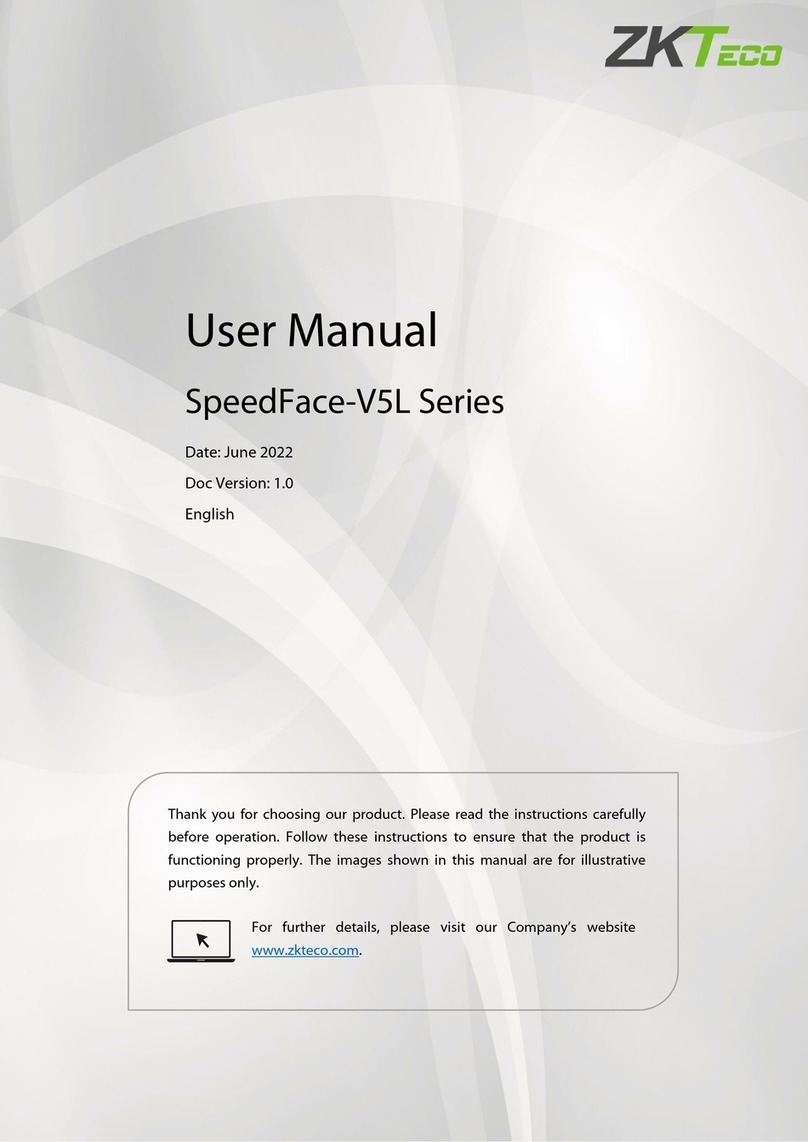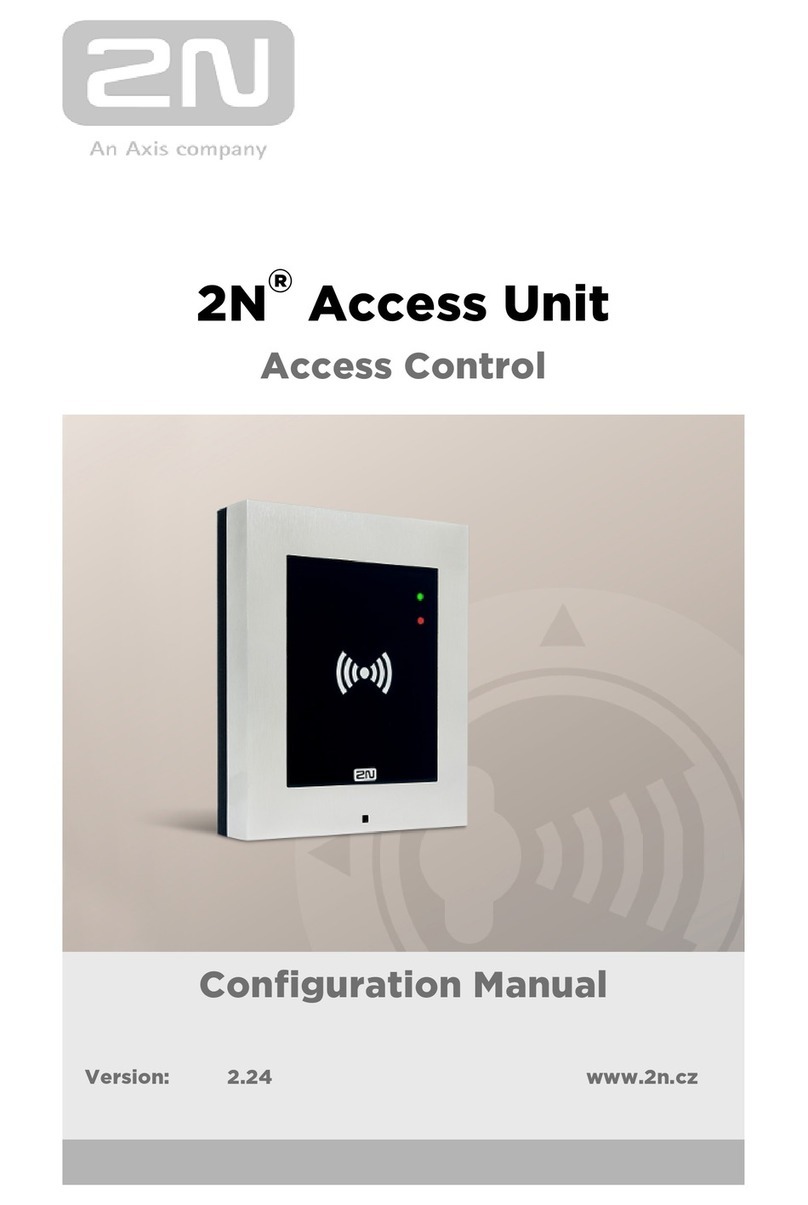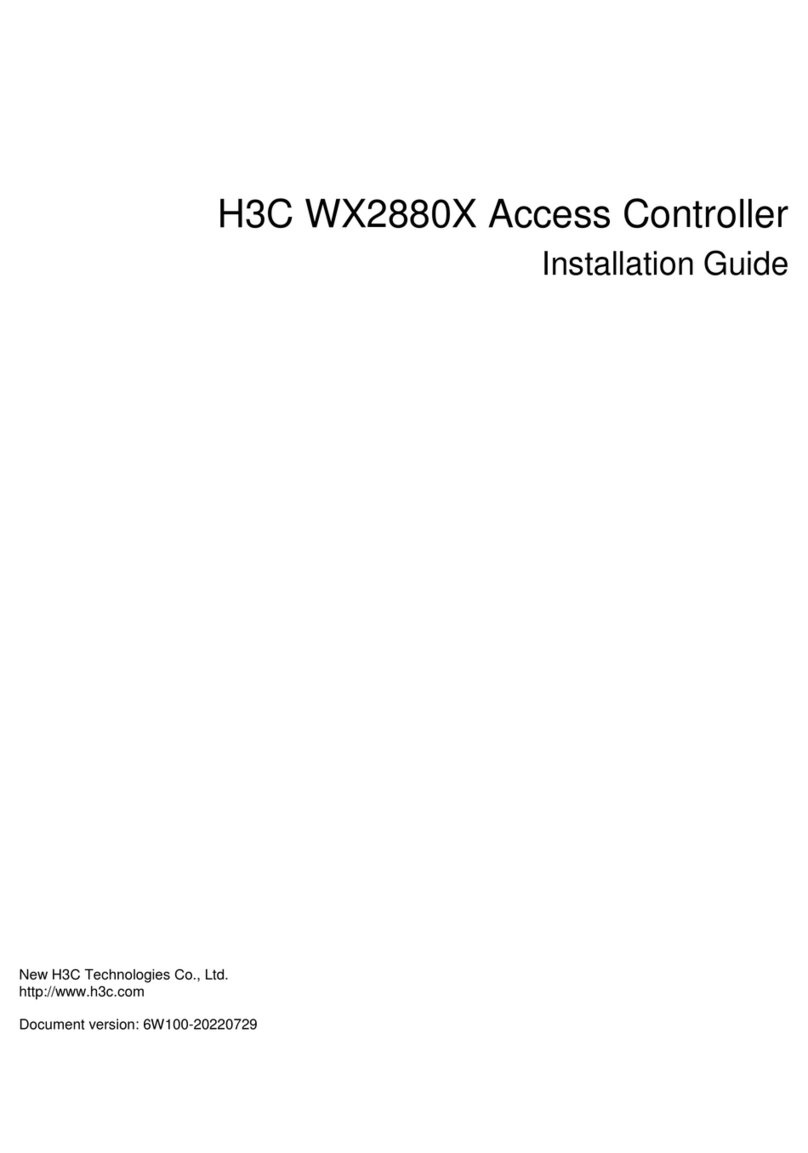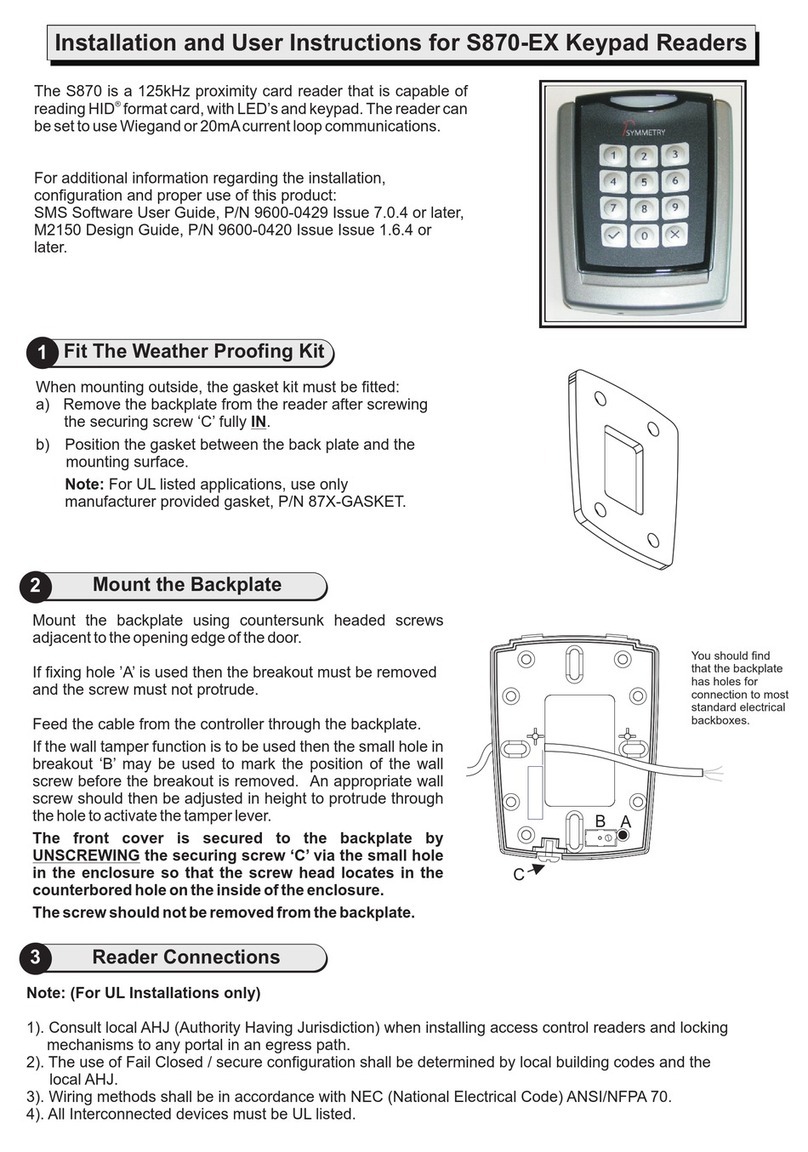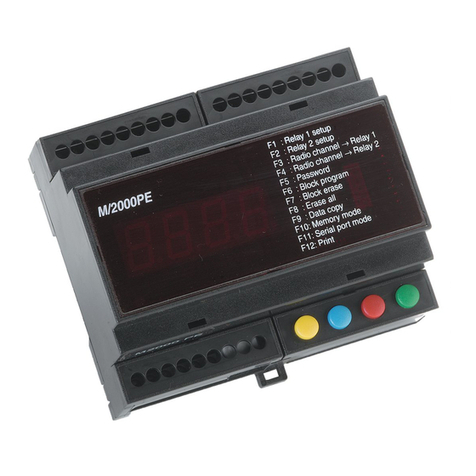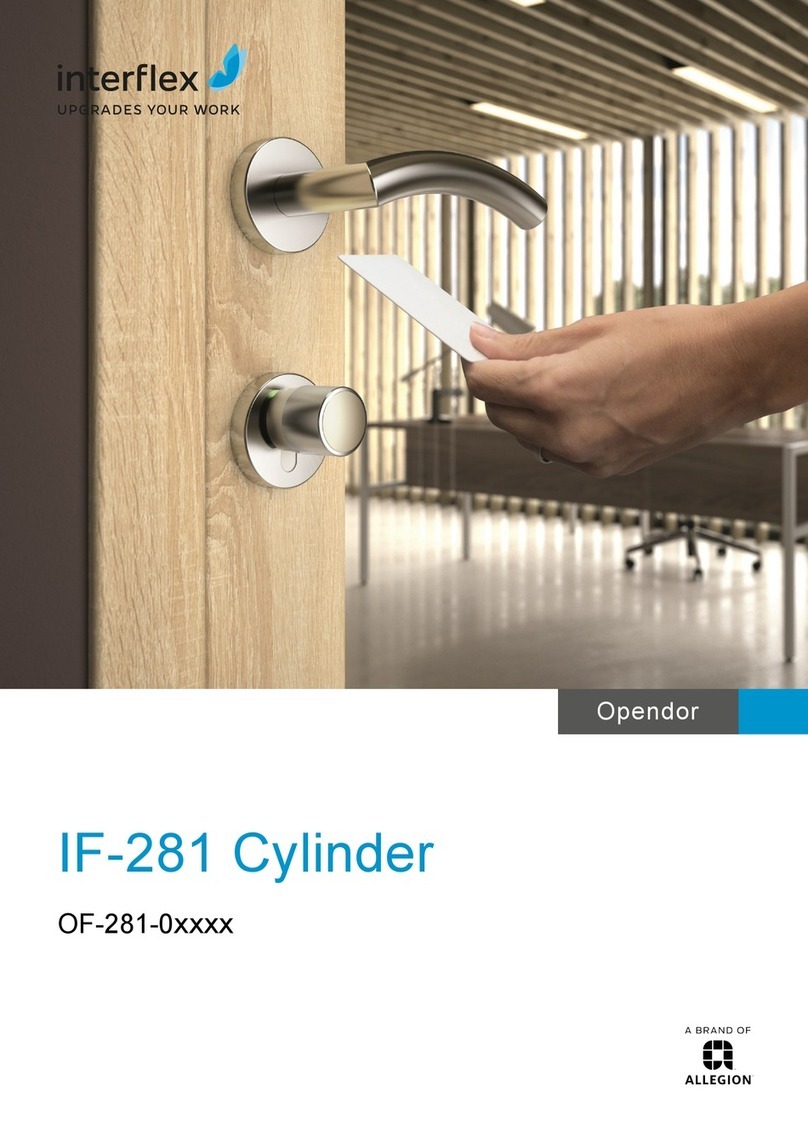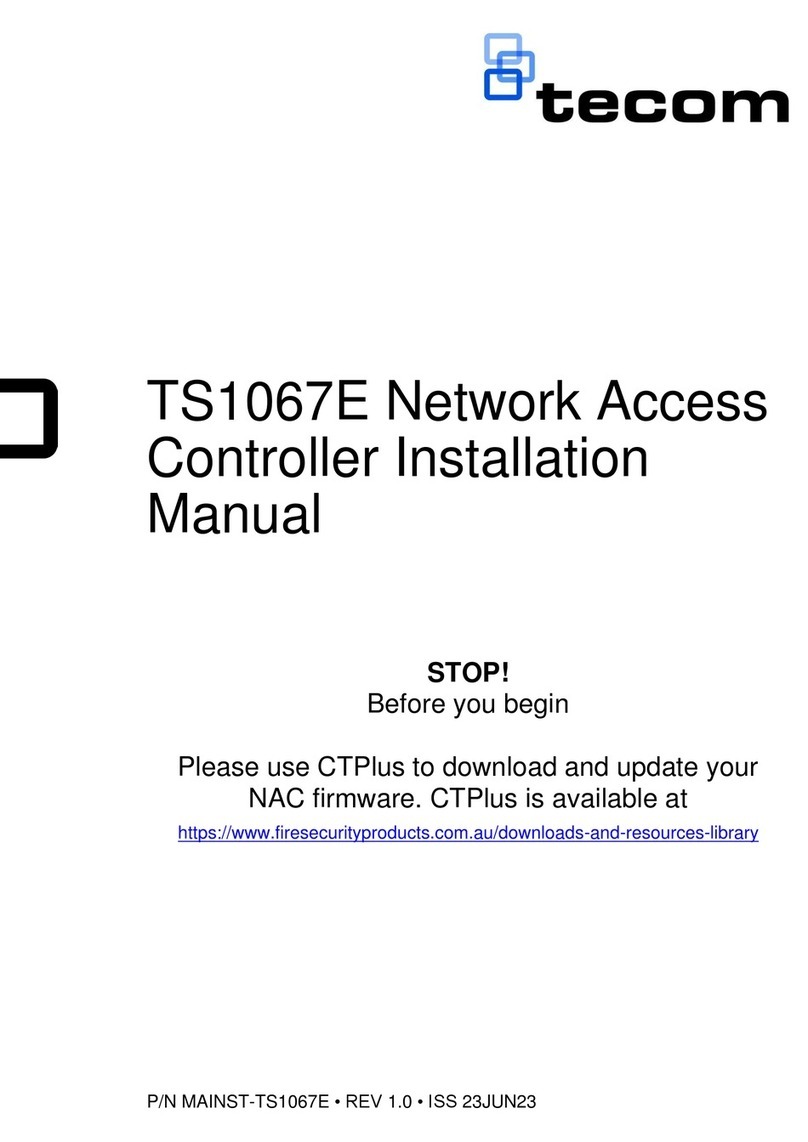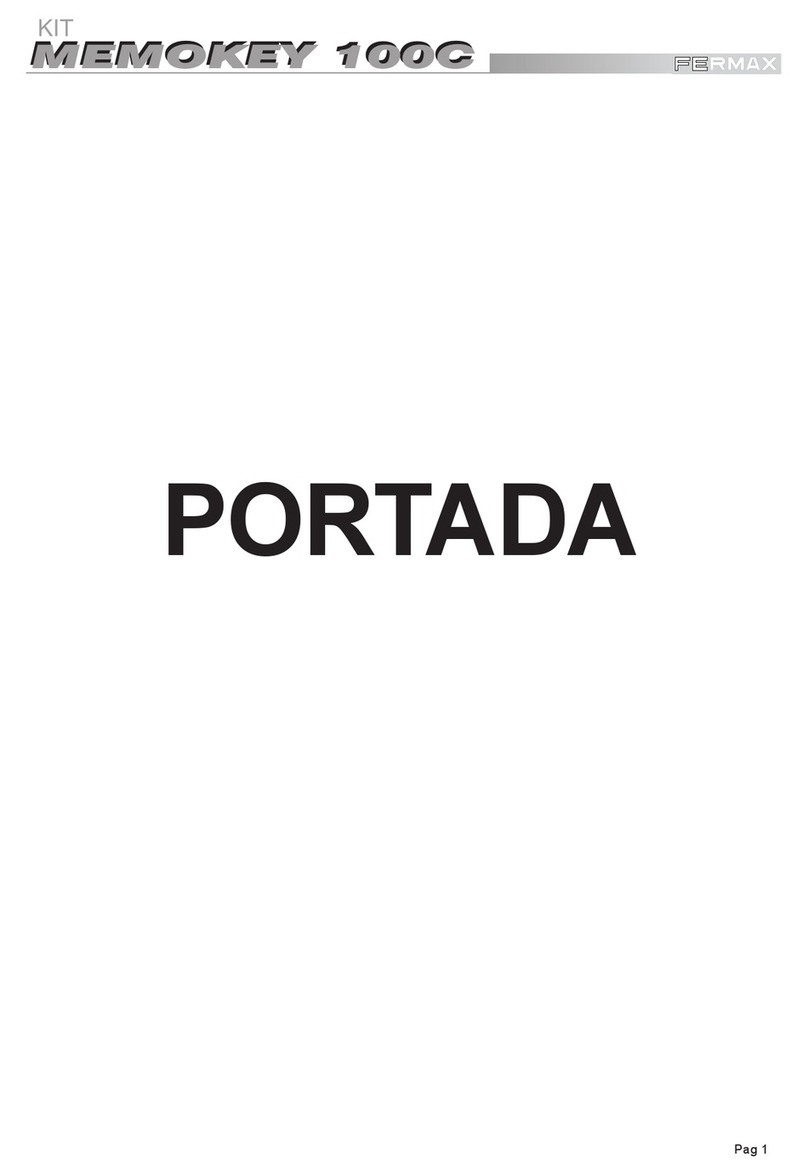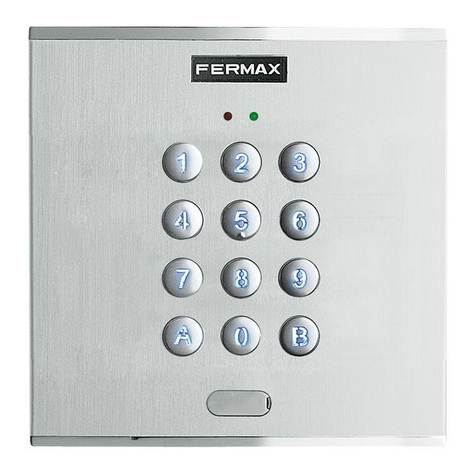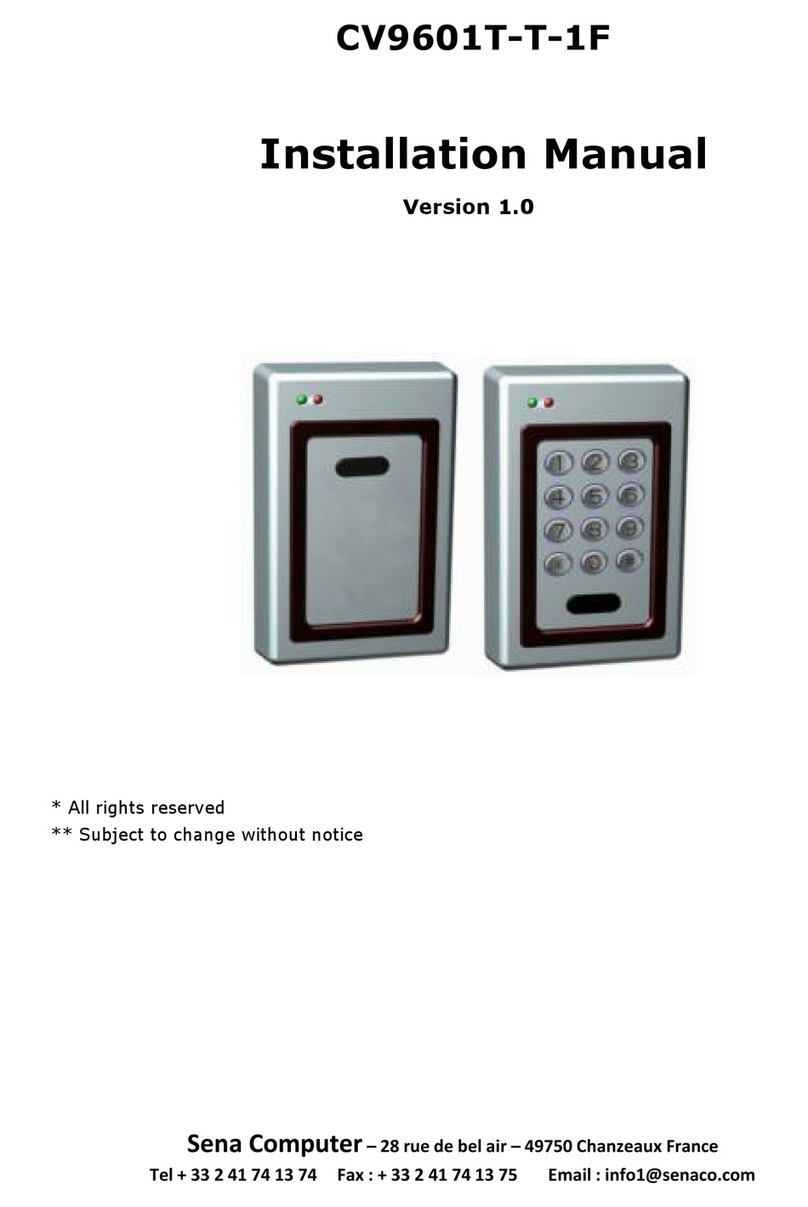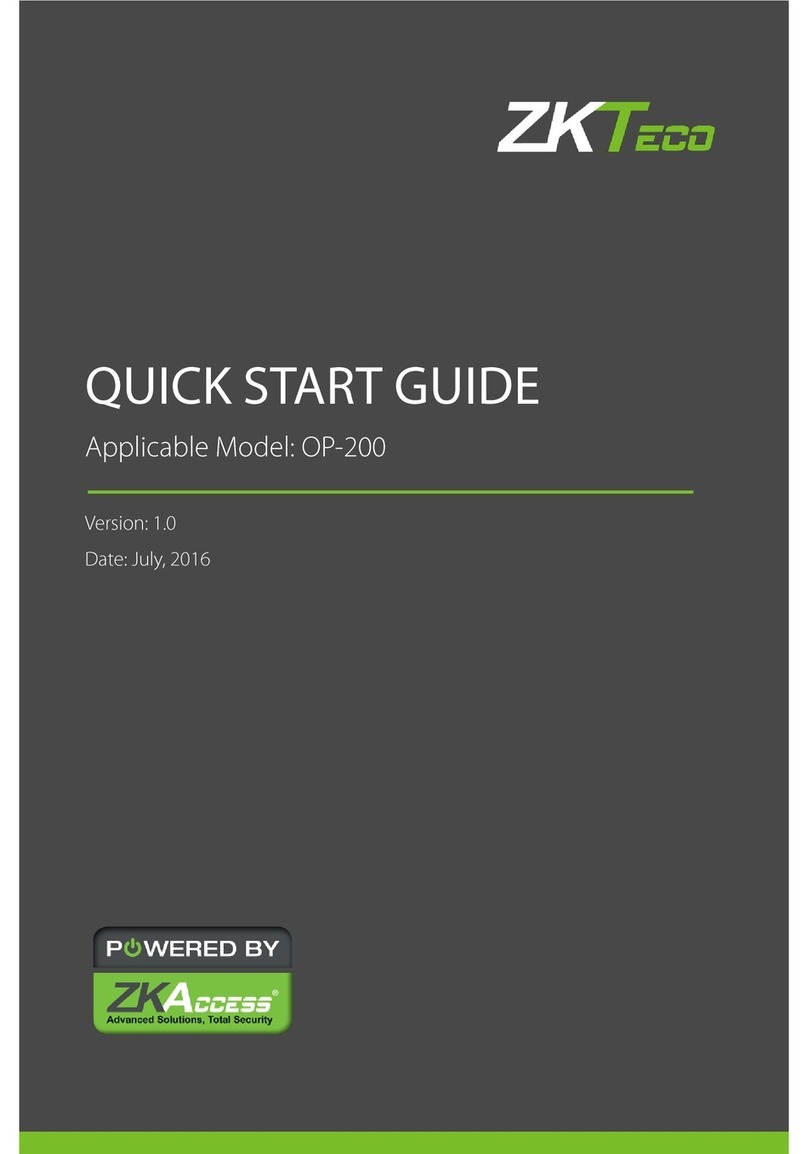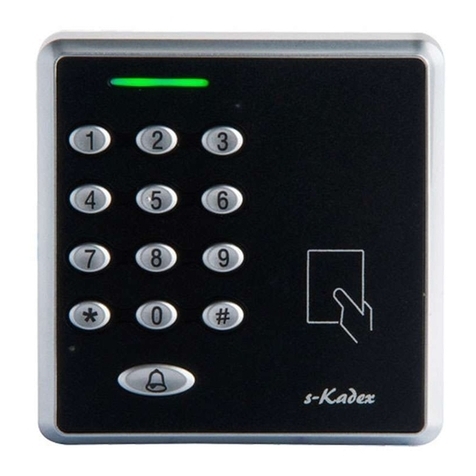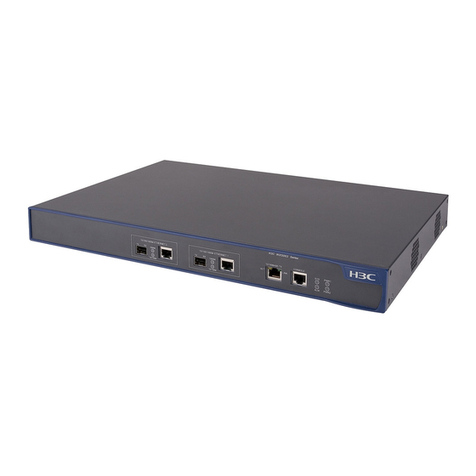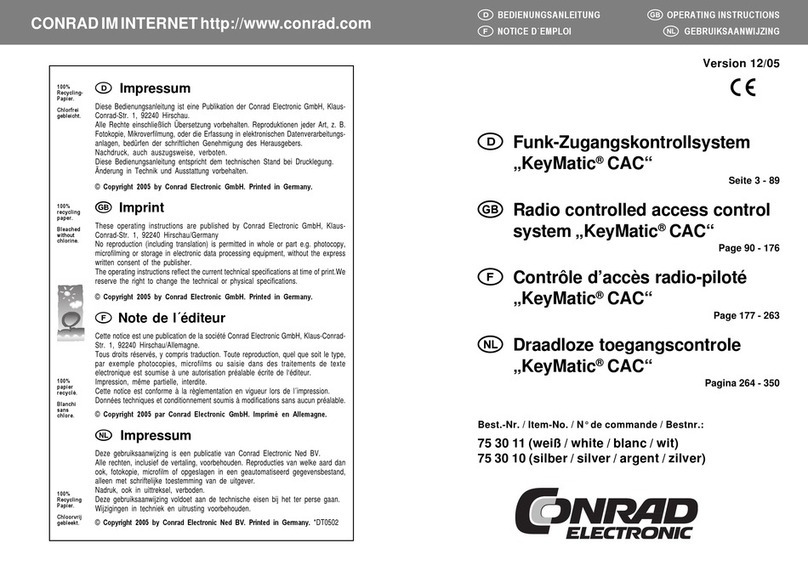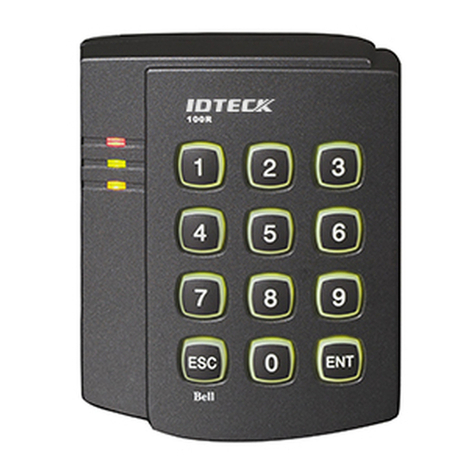7
MANUEL D’INSTALLATION FR
STAR1M - Centrale autonome / Lecteur Mifare®
Suppression de tous les badges (rétablissement de la
conguration par défaut)
- Couper l’alimentation du STAR1M / Basculer le DIP1 sur ON
- Rétablir l’alimentation du STAR1M.
(Passage en mode lecteur Mifare
®
)
- La voyant blanc/rouge s’active pendant l’effacement de la mémoire.
- L’effacement de la mémoire est suivi de la séquence de démarrage
(vert, rouge, bleu + BIP)
- Attendre la n de la séquence de démarrage puis couper
l’alimentation du STAR1M.
- Basculer le DIP1 et DIP2 sur OFF (mode centrale autonome activé)
Programmation du temps d’ouverture du relais de serrure
- Présenter le badge Maître, voyant jaune + BIP (mode programmation)
- Lancement d’une temporisation de 10s avant la sortie du mode de programmation
- Appuyer sur le bouton poussoir. Chaque pression du BP = 1 seconde.
Exemple : pour 10 sec, faire 10 pressions du BP, maxi 20 secondes
- Sortie du mode programmation au bout de 10s d’inactivité
- Clignotement voyants blanc et rouge équivalent aux nombres de seconde congurée
+ BIP
- Sortie du mode de programmation :BIP puis retour au voyant bleu.
1
ON
2
ON
3
ON
4
ON ON
OFF
1
ON
2
ON
3
ON
4
ON ON
OFF
9.1 Format de sortie WIEGAND 26, 30 et 44 bits
Format Wiegand 26 bits
Format 26 bits hexadécimal. La communication s’effectue par une liaison de type
Wiegand 26 bits (signaux : DATA1, DATA0). La trame est constituée d’une totalité de
26 bits et se décompose ainsi :
1. 1ère parité : 1 bit - parité de 12 premiers bits.
Code de badge : 3 mots d’un octet représentant des 6 derniers termes
Chaque mot est transmis bit de poids fort en premier.
2. 2ème parité : 1 bit - parité impaire des 12 derniers bits
Le code émis est 166A37 en hexadécimal
Parité 1 :
Parité 2 :
Bit 1 Bit 2 à bit 25 Bit 26
Parité paire sur bit 2 à bit 13 Donnée (24 bits) Parité impaire sur bit 14 à bit 25
Exemple : pour un badge dont le code hexadécimal est 00166A37
1 0001 0110 0110 1010 0011 0111 0
Parité 1 1 6 6 A 3 7 Parité 2
0 si le nombre de 1 dans le bit 14 à bit 25 est impair,
1 si le nombre de 1 dans le bit 14 à bit 25 est pair.
0 si le nombre de 1 dans le bit 2 à 13 est pair,
1 si le nombre de 1 dans le bit 2 à 13 est impair,
ON
9] FONCTIONNEMENT LECTEUR MIFARE®
